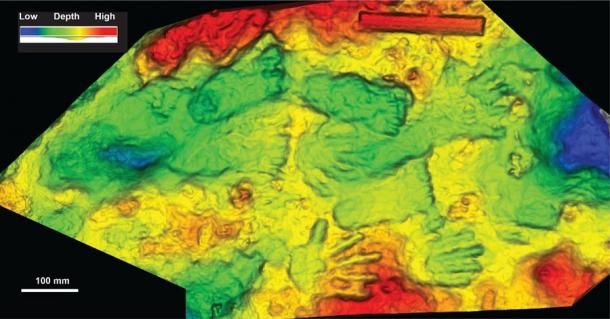Scientists have discovered an exciting new example of prehistoric art high on the Tibetan Plateau: a set of ancient children’s hand and footprints. If the dating of between 169,000 and 226,000 years ago is correct, this find represents “the oldest example of parietal [prehistoric] art ever discovered,” claim the researchers.
Ancient Art or Accident?
Until now, it was generally agreed among archaeologists that around 40,000 years ago early Homo sapiens were the first species to begin applying pigments to cave walls with their hands and fingers. However, long before humans crafted artistic forms with their appendages in Europe, footprints and handprints were left on mud and cave floors all over the world. The problem has always been deciding which were left accidentally and which were deliberate works of art.
Science Direct has published a new research paper detailing a set of children’s hand and footprints that were discovered at Quesang, high on the Tibetan plateau. Professor David Zhang from Guangzhou University discovered the hand and footprints marked in travertine (terrestrial limestone) that had flowed from a geothermal spring. The limestone on which the imprints were found was dated to between 169,000 and 226,000 years ago (middle Pleistocene period). Thus, the child’s prints are claimed to be “the oldest example of parietal [prehistoric] art ever discovered.”

A 3D model of the hand and footprints found on the Tibetan Plateau left behind by children somewhere between 169,000 and 226,000 years ago. This would absolutely mean these prints are the oldest prehistoric art in the world (so far). ( ScienceDirect)
Hand and Footprint Prehistoric Art Appears to be Intentional
If professor Zhang and his team’s dating of the limestone is accurate, this discovery does indeed represent the earliest evidence of deliberately executed works of prehistoric art . In the new paper the research team explain that they have called the prints “parietal art,” this term generally refers to cave paintings and to the drawings and engravings left on the walls of rock shelters . The new Tibetan print examples were not actually found inside a cave, but because they were found on rock they align best with the parietal art archaeological category.
The team used a range of non-intrusive techniques to record the Quesang fossil hand and footprints. Then, back at the lab, they created a 3D-relief model to visualize the skin lines of the prints. Radiometric dating methods were used to analyze the decay rate of uranium samples found within the limestone. When all the tests had been completed the team determined the prints were made between “169,000 and 226,000 years ago.”

The ancient hand and footprints left by two children on a limestone stone section found on the Tibetan Plateau. ( ScienceDirect)
Ageing The Ancient Hands That Left The Prints
The scans determined that two children left a total of five handprints and five footprints in the soft travertine limestone that subsequently hardened to rock. It is estimated that the child who left the footprints was probably “around seven years old.” The second child, who made the handprints, is estimated to have been slightly older at 12 years of age,” according to the paper.
While it was considered that the prints might have been made “accidentally” evidence was discovered that led the scientists to conclude that they were “carefully placed” by the two children. The researchers wrote in their paper that the ancient prints “were not left during normal walking and appear to have been deliberately placed.”
Speaking with NBC News , Professor Zhang said the discovery “is quite incredible when you think of the high altitude involved.” Located at over 4,200 meters high Quesang would have been exceptionally cold, not where one would expect to find “the oldest example of parietal [prehistoric] art in the world.”
The researchers believe the children were probably Denisovans. While you might associate Denisovans with “Denisova cave” in Siberia, in 2010 a team of scientists analyzed a jawbone discovered in western China dating to 150,000 years ago, belonging to a Denisovan. According to NPR, the so-called “Xiahe mandible” was originally found in 1980 in the Baishiya Karst Cave on the Tibetan Plateau.
If this new research study is accurate, we now know Denisovan children displayed an artistic flare long before Homo sapiens began making art. However, it is doubtful that we will ever know for sure if the ancient children’s hand and footprints were made intentionally or accidentally. But everything considered, the paper does say “they have a clear composition,” suggesting they are the oldest example of prehistoric art ever discovered.
Top image: A 3D-relief model of the Quesang fossil handprints and footprints, which appears to be the oldest prehistoric art ever discovered and the prints was made by two children, likely Denisovans. Source: ScienceDirect
By Ashley Cowie
 RSS Feed
RSS Feed















 September 17th, 2021
September 17th, 2021  Awake Goy
Awake Goy  Posted in
Posted in  Tags:
Tags: 













